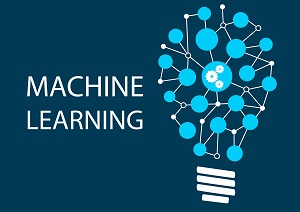Making healthcare and life science (HCLS) discoveries is time-consuming and requires considerable amounts of data. HPC enterprise infrastructure with AI and edge to cloud capabilities is required for biomedical research to make creating a human atlas of the body possible. The HPE, NVIDIA and Flywheel collaboration using the latest technologies designed for HCLS promise to transform biomedical research.
Revolutionizing Bioscience Research: Creating an Atlas of the Human Body
Evolution of Conversational Intelligence in Healthcare
In this contributed article, Michael Armstrong, Chief Technology Officer at Authenticx, discusses how AI-driven tools play an increasingly significant role in analytics, including those used to improve customer experience, by extracting valuable, actionable data insights. AI and ML enable healthcare organizations to more effectively listen to — and better understand — their customers’ voices and solve common issues or barriers.
Analysis of 145 Generative AI Startups IDs Opportunities to Remedy Pain Points in Healthcare and Life Sciences
Generative AI technology could deliver industry-changing improvements in healthcare delivery and life sciences productivity, efficiency and patient outcomes and presents a massive untapped opportunity for entrepreneurs and investors, according to a new market analysis by Justin Norden of GSR Ventures, Jon Wang, and Ambar Bhattacharyya of Maverick Ventures.
The Importance of Data Quality in Benefits
In this contributed article, Peter Nagel, VP of Engineering at Noyo, addresses the benefits/insurance industry’s roadblocks and opportunities — and why some of the most interesting data innovations will soon be happening in benefits.
How Artificial Intelligence Can Improve Coding Audits
In this contributed article, Jacob Wilkinson, Director, Product Management at VisiQuate, takes a look at how medical coding audits are complex, time-consuming, and costly processes that historically have required significant investment of manual resources to complete, but, more recently, advances in artificial intelligence have made audits more efficient, accurate, and cost-effective.
Using Advanced Analytics to Address Patient Risk and Deliver Value-based Care
In this contributed article, Michael Dulin, MD, PhD, Chief Medical Officer, Gray Matter Analytics, suggests that to improve health outcomes and lower cost, the U.S. healthcare system must abandon fee for service models and provide comprehensive, proactive value-based care (VBC). High-quality data and advanced analytics that produce actionable insights into patients’ medical and social needs are an essential building block for this transition.
Reforming Prior Authorization with AI and Machine Learning
In this contributed article, Niall O’Connor, CTO at Cohere Health, discusses how the application of AI and ML to the onerous prior authorization (PA) process can relieve both physicians and health plans of the repetitive, manual administrative work involved in submitting and reviewing these requests. Most importantly, these intelligent technologies transform PA from a largely bureaucratic exercise into a process that is capable of ensuring that patients receive the highest quality of care, as quickly and painlessly as possible.
Active Monitoring and Statistical Prediction of Indoor Radon Concentration Can Reduce the Risk of Lung Cancer
In this contributed article, Insoo Park, CEO of Ecosense Inc., discusses how scientists are turning to statistical prediction methodologies for help with preventing radon-related deaths. Exposure to radon is the first leading cause of lung cancer among non-smokers According to the EPA, radon-related lung cancer deaths total 21,000 per year in the US alone.
New Streamlined Statistical Method Provides Improved Pattern Detection and Risk Prediction for Disease
Researchers from the Renaissance Computing Institute (RENCI) at UNC-Chapel Hill, Perspectrix, the UNC School of Medicine, and the WVU Rockefeller Neuroscience Institute have collaborated to develop a new method for finding patterns in data which arguably surpasses the performance of a generally accepted “gold standard.”
AI and Robotics Uncover Hidden Signatures of Parkinson’s Disease
A study published in Nature Communications unveils a new platform for discovering cellular signatures of disease that integrates robotic systems for studying patient cells with artificial intelligence methods for image analysis. Using their automated cell culture platform, scientists at the NYSCF Research Institute collaborated with Google Research to successfully identify new cellular hallmarks of Parkinson’s disease by creating and profiling over a million images of skin cells from a cohort of 91 patients and healthy controls.











